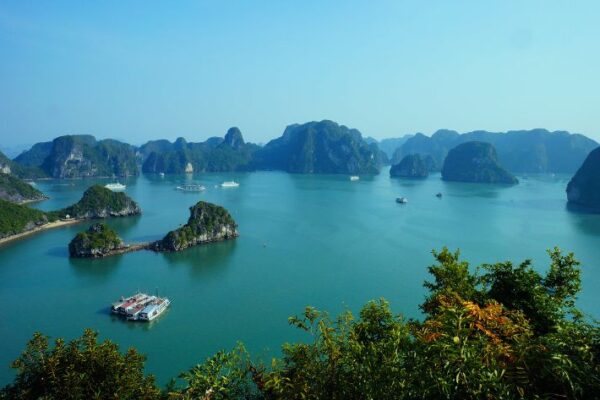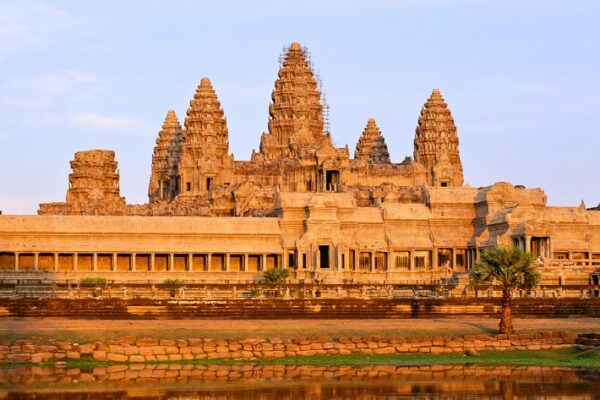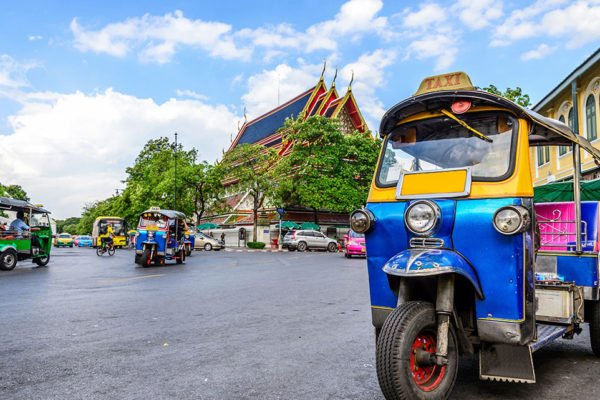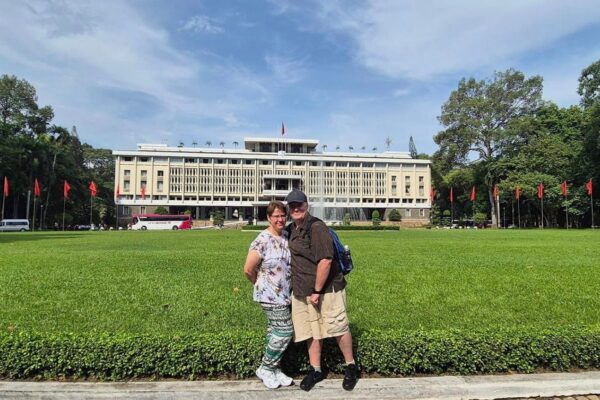How To Plan A Trip To Vietnam: Step-by-Step Guide For An Unforgettable Journey

A country of dramatic contrasts, Vietnam blends ancient pagodas with buzzing cities, misty mountains with tropical beaches, and flavorful street food with elegant fine dining. So how to plan a trip to Vietnam can feel thrilling—and a little overwhelming.
This guide serves as a compass to transform the unknown into unforgettable experiences. It empowers you to choose the ideal time to visit, map out an inspiring itinerary, master budgeting, arrange for seamless internal transportation, and embrace the beauty of cultural etiquette. Let’s get started.
Why Is Visiting Vietnam Worth It?
Vietnam has always been a captivating destination, one of the best dynamic Southeast Asian gems. The country is witnessing a significant tourism resurgence, with projections of 25 to 28 million international visitors in the coming year. From its time-worn pagodas to its ultramodern skyline, Vietnam’s unique blend of old and new is drawing attention from travelers across the globe, especially as more digital nomads, luxury seekers, and culturally curious explorers add it to their bucket lists.
A major part of Vietnam’s growing appeal is its rapidly improving infrastructure, which is transforming how visitors move through and experience the country. The long-awaited Ho Chi Minh City Metro is set to launch its first line, easing traffic and making it easier to explore urban highlights without the usual congestion. Simultaneously, airports in Hanoi, Da Nang, and Ho Chi Minh City are being expanded or upgraded to handle increased international demand, making arrivals and departures far smoother than in years past.
Even with this modern momentum, Vietnam remains a rare destination where you can enjoy both budget-friendly travel and high-end luxury. A bowl of steaming street-side pho might cost you less than $2, but you’re never far from a five-star resort with world-class spa treatments, a private beach, and curated cultural experiences. This juxtaposition of affordability, comfort, and authenticity, paired with the country’s rich cultural heritage, makes Vietnam a truly versatile destination for every kind of traveler in the future.
8 Steps To Design A Trip To Vietnam
Step 1: Decide When to Go
Choosing the right time to visit Vietnam is one of the most important steps in planning your trip—and it can make all the difference between a good vacation and a truly unforgettable one. Vietnam stretches over 1,000 miles from north to south, meaning the country experiences diverse climates across its three main regions. Understanding the seasonal differences helps you pack right, plan your itinerary smartly, and avoid weather-related surprises.
Northern Vietnam (Hanoi, Sapa, Ninh Binh)

The northern part of Vietnam experiences distinct seasons, characterized by cooler winters and warm summers. For most travelers, the best time to explore northern Vietnam is March to May and September to November, when the weather is dry, mild, and perfect for outdoor adventures. Spring brings bursts of blossoms and vibrant festivals, while autumn offers golden rice terraces in places like Sapa and Ha Giang—ideal for trekking or photography.
Summer (June–August) can be hot and humid, with occasional downpours, especially in Hanoi. Winter (December–February) may surprise you with chilly mornings and misty skies, particularly in the mountains. But if you don’t mind the cold, this can be a peaceful, uncrowded time to enjoy the cities and heritage sites.
>> Read More: What To Do In Northern Vietnam – Top 15 Experiences To Put On Your Checklist
Central Vietnam (Hoi An, Hue, Da Nang)
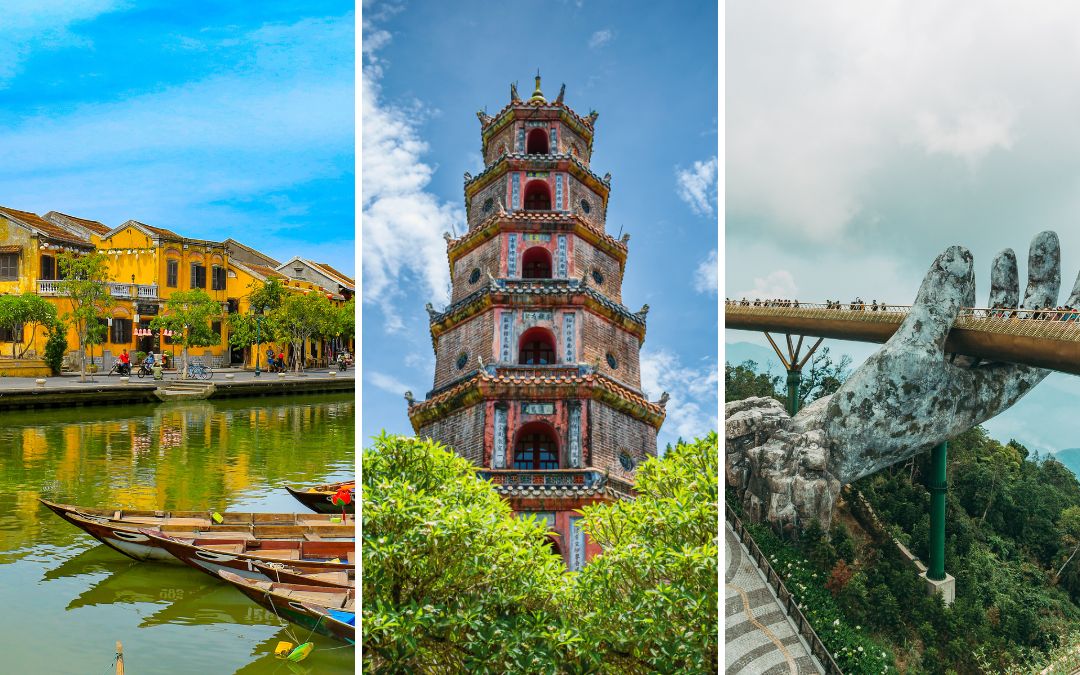
Central Vietnam boasts a tropical monsoon climate, and the best weather typically spans January to August, making it ideal for sunseekers headed to Hội An’s beaches or Hue’s ancient citadel. These months are mostly dry, warm, and sunny—perfect for cycling along the Thu Bồn River or strolling through Hội An’s lantern-lit streets in the evening.
However, from September to November, this region frequently experiences typhoons and heavy rainfall, which can result in flooding in certain areas. If you’re traveling during this window, it’s wise to keep your schedule flexible and stay updated on local weather conditions.
>> Read More: Central Vietnam Itinerary: A Luxurious Escapes of Heritage and Relaxation
Southern Vietnam (Ho Chi Minh City, Mekong Delta, Phu Quoc)

In the south, the climate stays consistently warm year-round, with two main seasons: dry and rainy. The dry season runs from December to April, making it the best time to explore Ho Chi Minh City’s buzzing street life or cruise through the Mekong Delta. During this period, the weather is sunny and pleasant, with low humidity and clear skies—great for sightseeing and island-hopping in Phu Quoc or Con Dao.
The rainy season, from May to November, brings short, heavy showers—usually in the late afternoon. While this shouldn’t deter you (since rains often pass quickly), it’s smart to pack light rain gear and plan indoor activities just in case.
>> See Tour: From Central To Southern Vietnam
Peak Season vs. Shoulder Season: What to Expect
Vietnam’s peak tourist seasons typically align with the best weather windows, especially December to March and July to August. During these months, you can expect higher prices and larger crowds, particularly in major destinations like Hanoi, Hoi An, and Halong Bay. Hotels and tours often sell out quickly, so advanced planning is crucial.
If you’re looking for fewer crowds and better deals, consider traveling during the shoulder seasons—March to May and September to November. You will still enjoy favorable weather in most regions while benefiting from a more relaxed pace, more affordable accommodations, and increased availability of guided experiences.
Step 2: Set Your Trip Duration & Outline Your Itinerary
How long you spend in Vietnam can completely shape your travel experience. From quick escapes to deep explorations, the right itinerary depends on your interests, pace, and travel style. While it’s possible to catch the highlights in a week, Vietnam truly shines when you give it time to unfold. That’s why most experienced travelers recommend a minimum of 7–10 days, with the sweet spot being 2–3 weeks if you want to explore multiple regions without rushing.
7-Day Itinerary: A Compact Vietnam Adventure
Short on time but big on discovery? This 7-day journey covers Vietnam’s essential highlights—ideal for first-time visitors.
Start in Hanoi, where ancient temples and buzzing street life set the tone. Then cruise through the stunning limestone peaks of Halong Bay on an overnight boat—sunset on the deck, seafood dinner, and tranquil scenery included.
Fly south to dynamic Ho Chi Minh City, where war history meets modern energy. End your trip in the lush Mekong Delta, gliding through quiet canals and visiting vibrant floating markets.
This itinerary blends culture, nature, and city charm—seamlessly planned for travelers who want to see the best of Vietnam in just one unforgettable week.
>> See Tour: Compact Vietnam Holiday
10–15 Day Itinerary: North–Central–South Highlights
Want to see it all without feeling rushed? This 15-day journey takes you through Vietnam’s greatest hits—from ancient capitals to coastal gems and bustling cities.
Start in Hanoi, then cruise overnight through the majestic Halong Bay. Explore imperial Hue, wander the lantern-lit streets of Hoi An, and relax on its nearby beaches. End your trip in Ho Chi Minh City, with a day trip to the lush Mekong Delta for a taste of local life on the water.
This itinerary is a perfect blend of culture, nature, and history—designed for travelers who want a seamless, in-depth experience of Vietnam’s most iconic destinations.
>> See Tour: The Very Best of Vietnam
30-Day Itinerary: Extensive Vietnam Exploration
For those who want to experience Vietnam beyond the surface, this 30-day itinerary is your deep dive into the country’s culture, landscapes, and hidden gems.
Start in Hanoi and cruise through the stunning Halong Bay, then head north to the mountains of Sapa and Ha Giang for ethnic encounters and dramatic scenery. Journey south through imperial Hue, charming Hoi An, and the coast of Da Nang.
Discover the stunning landscapes of the Central Highlands, then conclude your journey in Ho Chi Minh City and the tranquil Mekong Delta.
Perfect for travelers seeking a complete, authentic, and unhurried experience, this month-long journey shows you Vietnam in its purest form.
>> See Tour: Vietnam In Depth
Step 3: Budgeting Your Vietnam Trip
Vietnam is known for offering incredible travel experiences at an exceptional value. Whether you’re traveling on a tight budget or seeking high-end comfort, it’s easy to plan a trip that suits your style. Here’s how to break down your costs.
International & Domestic Flights
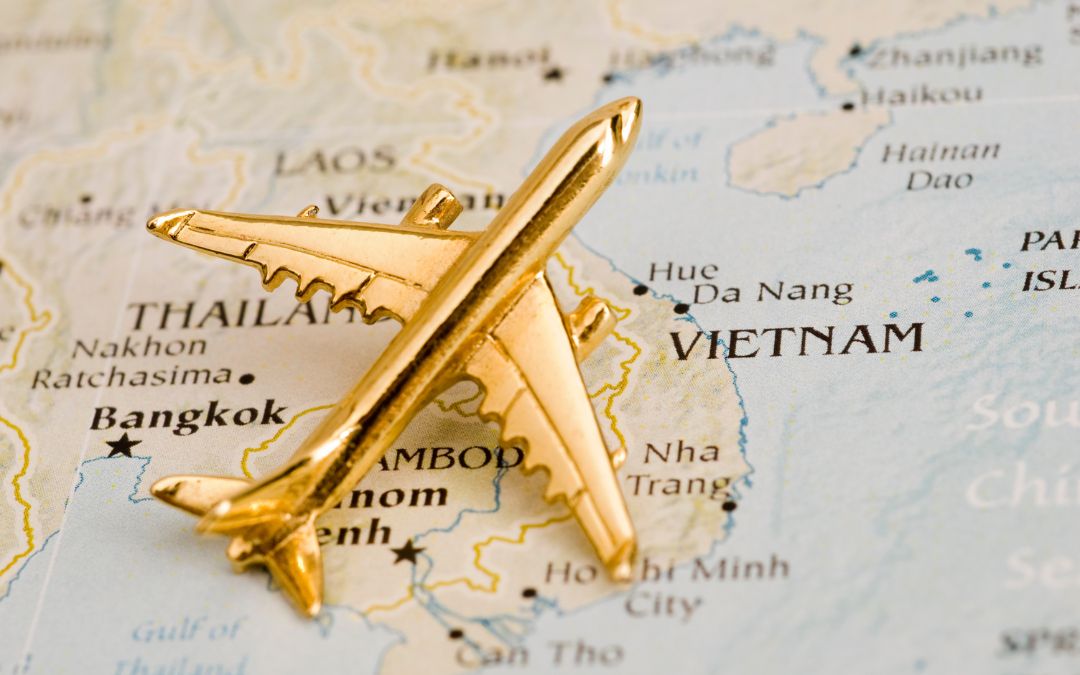
- International flights to Vietnam: Range from $600–$1,200 USD round-trip, depending on season and departure location.
- Domestic flights within Vietnam: Budget airlines like VietJet or Vietnam Airline offer routes between major cities from $80–$120 USD per flight.
Accommodation Costs
Vietnam offers a wide range of options for every traveler:
- Budget: Hostels & guesthouses → $10–$25/night
- Mid-range: 3–4 star hotels & boutique stays → $30–$80/night
- Luxury: High-end resorts & five-star hotels → $120–$250+/night
Tip: Mid-range and boutique hotels often offer fantastic service at a fraction of what you’d pay elsewhere.
Daily Spending: Food, Transport & Tours
Meals:
- Street food or local eats → $2–$5/meal
- Sit-down restaurants → $10–$30/meal
Transportation:
- Local transport (Grab, taxis, buses) → $1–$10 per ride
- Private car with driver → $50–$100/day (ideal for families or small groups)
Day tours & experiences:
- Group city tours → $20–$40
- Halong Bay day cruise or Mekong Delta tour → $50–$80
- Premium or private tours → $100+
Visa Fees
E-visa for most nationalities:
- $25 USD for 30 days, single entry
- Apply online via Vietnam’s official government portal
Step 4: Handle Visas & Entry
Before you pack your bags, make sure you’ve got the right visa in place. Luckily, Vietnam has made its visa process easier than ever with recent updates to its entry policies.
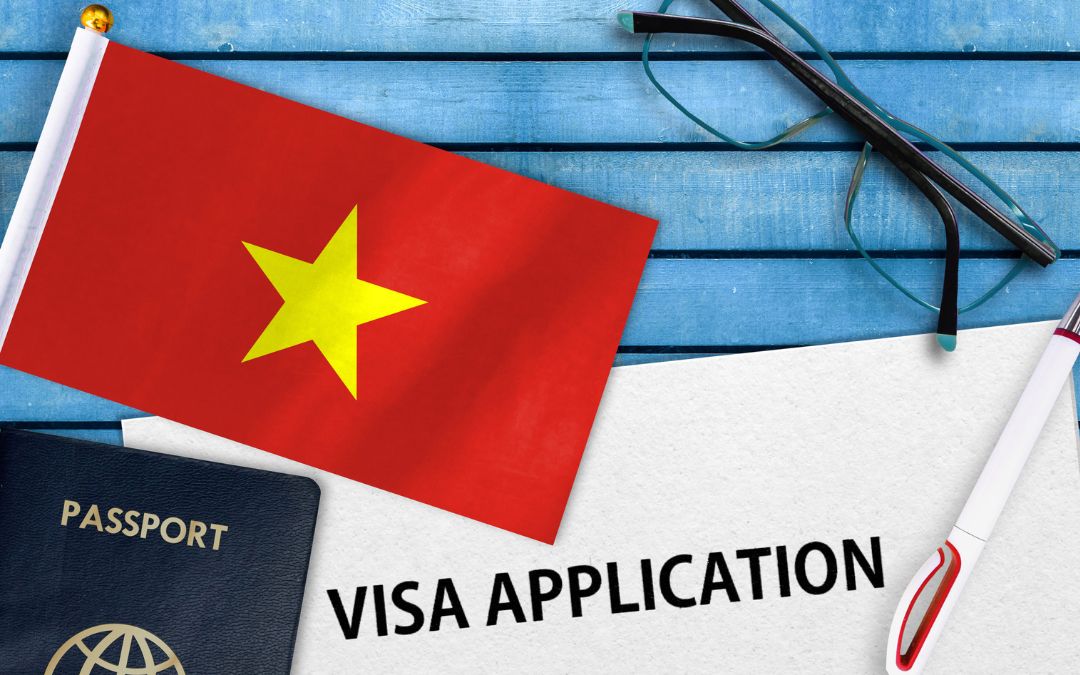
Who Needs a Visa?
Most international travelers do need a visa to enter Vietnam. But don’t worry—there’s a simple online option available for nearly everyone.
Apply Online with the E-Visa
- Vietnam’s e-visa is available to all nationalities as of August 2023.
- Valid for up to 90 days, with single or multiple entries.
- Application fee: $25 USD.
- Processing time: Usually 3–5 business days.
- Apply directly through the official government website.
Tip: Make sure your passport is valid for at least six months beyond your travel date.
Special Case: Visa-Free Entry to Phu Quoc
- If you fly directly to Phu Quoc Island, you may enter visa-free for up to 30 days.
- You must remain on the island (not travel to mainland Vietnam) to qualify.
This is perfect for travelers looking for a short tropical getaway without any extra paperwork.
>> Read More: Vietnam Visa-Free Countries in 2025 – Who Can Travel Vietnam Without a Visa?
Step 5: Choose Your Tour Types: DIY Travel vs. Private Tours
Vietnam welcomes all kinds of travelers—those who love the thrill of discovery and those who prefer a seamless, well-curated journey. Choosing between independent travel and private or guided tours comes down to your comfort level, time, and the kind of experience you want. Here’s how to decide.
DIY Travel: For Free Spirits & Experienced Travelers
If you enjoy spontaneous adventures, flexible scheduling, and finding your own way around, DIY travel might be for you. Vietnam is backpacker-friendly, with affordable public transportation, a strong tourism infrastructure, and a welcoming local culture.
Pros of DIY travel
- Flexibility: Change your plans on the go and spend more time in places you love.
- Budget-friendly: You can save by using buses, trains, and budget airlines.
- Deeper immersion: Engage with locals, discover hidden gems, and eat like a local.
Considerations
- Language barriers and local navigation can be tricky in rural areas.
- You’ll need to manage transport, accommodations, and activity bookings yourself.
- Ideal for: Solo travelers, repeat visitors, or those with longer travel time.
Private Tours: Stress-Free, Enriching & Time-Saving

If you prefer your trip to run smoothly, especially in a destination with complex logistics or limited time, private tours are an excellent choice. These experiences are curated by local experts and tailored to your preferences, allowing you to focus entirely on the experience.
Pros of private or guided tours:
- Convenience: All logistics are handled for you—flights, transfers, hotels, and entrance tickets.
- Local expertise: Guides provide cultural context, language support, and access to authentic experiences.
- Comfort & safety: Ideal for families, older travelers, or those visiting remote areas.
- Custom itineraries: Many companies (like Asia Pioneer Travel) offer tailor-made tours that suit your travel style.
Considerations:
- Private tours can be more expensive than going solo, but offer excellent value for the ease and experience.
- Less spontaneity compared to fully independent travel.
- Ideal for: First-time visitors, families, couples, small groups, or business/leisure combo travelers.
Step 6: Plan Internal Transportation
Getting around Vietnam is an adventure in itself, and the right mode of transport can make your journey smoother, more scenic, and even more memorable. With the country stretching over 1,600 kilometers from north to south, your transportation choices will depend on how far you’re traveling, your schedule, and how immersive you want your experience to be.
Domestic Flights: Save Time on Long Distances
- Tip: Book in advance, especially during high season or national holidays, to lock in the best prices and seat availability.
For covering large distances quickly—like traveling from Hanoi to Ho Chi Minh City, or from Da Nang to Phu Quoc—domestic flights are your best bet. Vietnam boasts a wide network of budget-friendly airlines such as Vietnam Airlines, VietJet Air, and Bamboo Airways. Flights are frequent, affordable, and typically short (1–2 hours), allowing you to maximize your time exploring rather than sitting on a bus for a full day.
Trains: The Scenic, Slow Travel Experience

- Ideal for: Travelers with more time, photography lovers, and those seeking a relaxed, culturally immersive ride.
If you’re not in a rush and want to soak in the scenery, the Reunification Express—Vietnam’s famous north–south railway—offers a nostalgic and picturesque way to travel between major cities. Trains connect Hanoi, Hue, Da Nang, Nha Trang, and Ho Chi Minh City, running along a beautiful stretch of coastline and through lush countryside.
While slower than flying, trains are clean, relatively comfortable, and provide a window into local life. Choose between soft seats, sleeping berths, and air-conditioned cabins depending on your journey length. The segment between Hue and Da Nang is particularly scenic, winding past misty hills and coastal cliffs.
Private Cars, Buses & Transfers: Comfort and Flexibility
For shorter routes or multi-stop itineraries, private car transfers offer convenience and control. Whether it’s a ride from the airport, a day trip to the countryside, or a journey between cities like Hoi An and Hue, having a private vehicle means you can travel on your own schedule, make scenic stops, and enjoy the comfort of door-to-door service.
Vietnam also has an extensive bus network, ranging from sleeper buses to minivans. Companies like Futa Buslines and The Sinh Tourist serve most major routes. These are budget-friendly alternatives, although comfort and punctuality can vary by provider.
In cities, Grab (Vietnam’s version of Uber) is a reliable and affordable option for short rides, especially in places like Hanoi, Ho Chi Minh City, and Da Nang. You can book cars or motorbikes via the app, and even order food and pay in advance.
>> Read More: Transportation in Vietnam – A Comprehensive Guide for Tourists
Step 7: Understand Cultural Norms, Etiquette, and Practical Considerations
Essential Cultural Awareness
- Social Interactions: Vietnamese people value politeness and face-saving. Learn basic Vietnamese greetings and phrases to show respect for local culture. Avoid pointing with your finger or touching someone’s head.
- Business Cards and Gifts: Present and receive business cards or gifts with both hands as a sign of respect. Small gifts from your home country are appreciated when visiting local families or participating in homestays.
- Religious Sites: Dress modestly when visiting temples and pagodas, covering shoulders and knees. Remove shoes before entering sacred spaces and maintain quiet, respectful behavior.
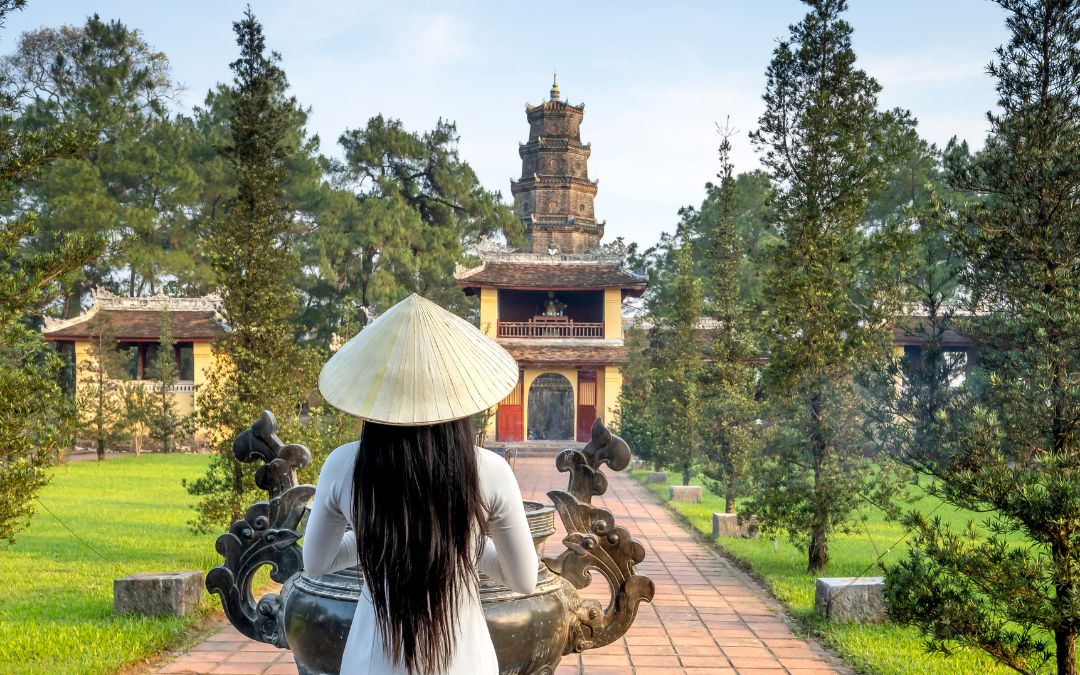
Dining Etiquette
Vietnamese dining culture emphasizes sharing and community. Wait for the eldest person to begin eating, and try to finish everything on your plate to show appreciation. When using chopsticks, never leave them standing upright in your rice bowl.
Communication and Connectivity
Purchase a local SIM card upon arrival for affordable data and calling rates. Major providers include Viettel, Mobifone, and Vinaphone. Download offline maps and translation apps before traveling to remote areas with limited connectivity.
Currency and Payment Methods
The Vietnamese Dong (VND) is the official currency; however, US dollars are also accepted in tourist areas. We recommend carrying cash for small vendors and rural areas, as credit cards are not widely accepted in these areas. However, credit cards are generally accepted in cities and tourist establishments. Notify your bank of travel plans to avoid card blocking.
Shopping and Bargaining
Vietnam offers excellent shopping opportunities, from bustling markets to modern malls. Bargaining is expected in markets and with street vendors. Start by offering 30-50% of the initial price and negotiate respectfully. Fixed prices are standard in malls and established shops.
Safety and Security
Vietnam is generally safe for travelers, but we advise taking standard precautions. Secure your valuables, be aware of your surroundings, and avoid displaying expensive items. Traffic can be chaotic in significant cities, so exercise caution when crossing streets and consider the flow of motorbikes.
Step 8: Pack Smart and Prepare for Departure
Clothing:
- Lightweight, breathable fabrics for hot, humid weather
- Long pants and shirts for temple visits and air-conditioned spaces
- Rain jacket or umbrella for unexpected showers
- Comfortable walking shoes and sandals
Health and Safety:
- Sunscreen with high SPF protection
- Insect repellent containing DEET
- Basic first aid kit and personal medications
- Water purification tablets or portable filter
Technology and Convenience:
- Universal power adapter for Vietnamese outlets
- Portable power bank for device charging
- Waterproof phone case for water activities
- Copies of important documents stored digitally
Let’s wrap up with this Pre-Departure Essentials video before traveling to Vietnam:
How To Plan A Trip To Vietnam With APT
Preparing a trip to Vietnam can feel overwhelming at first, but with the right guidance and a touch of local insight, it transforms into a truly enriching experience.
Let Asia Pioneer Travel turn your dream into a perfectly tailored journey. With years of expertise and a deep love for this land, our travel designers are here to craft a personalized itinerary that fits your pace, interests, and travel style—whether you’re craving cultural immersion, scenic landscapes, or culinary adventures.
Start planning your hassle-free Vietnam trip today with Asia Pioneer Travel — your adventure begins here!
